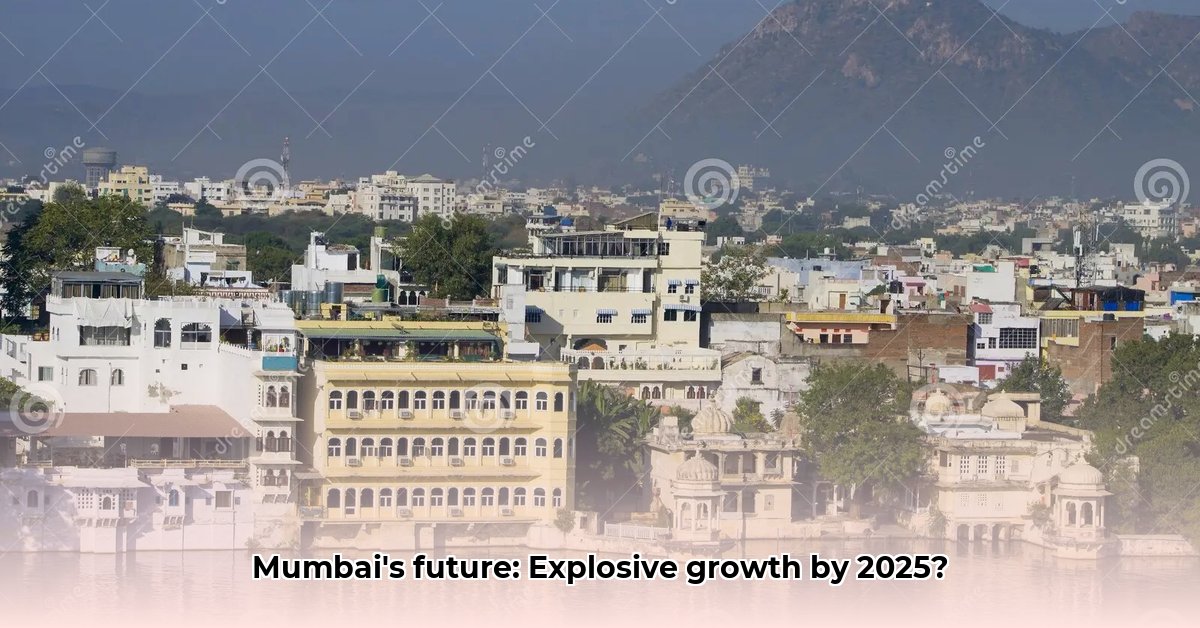
Understanding India's Urban Boom
India's cities are experiencing unprecedented growth, transforming the country's landscape at an astonishing pace. This article focuses on the projected growth of India's second-largest city by 2025, analysing the factors driving this expansion and its implications for various stakeholders. We'll delve into the challenges and opportunities presented by this rapid urbanisation, comparing it to other major Indian metropolises. But how accurately can we predict the future of a city? For more on urban modelling, see this helpful resource.
The Challenges of Forecasting Urban Growth
Accurately predicting urban growth is inherently complex. Methodologies vary significantly between research institutions, leading to differing projections. Factors like economic shifts, migration patterns, and government policies are all dynamic and difficult to quantify precisely. Think of it like trying to predict the exact height of a sapling – you can make an educated guess based on its current growth rate, but unforeseen events like a drought or pest infestation can drastically alter its trajectory. Our analysis relies on a synthesis of available data, acknowledging the inherent limitations of any predictive model.
Bangalore's Ascent: A Closer Look at India's Second-Largest City
While precise figures vary, Bangalore, India's second-largest city, is projected to experience substantial growth by 2025. This expansion is driven by several key factors:
- Booming Tech Sector: Bangalore's thriving tech industry attracts a large workforce, fueling demand for housing and infrastructure. This is a major engine of growth, attracting both domestic and international talent.
- Internal Migration: People continue to migrate from rural areas to urban centres in search of better opportunities, significantly increasing Bangalore's population. This internal migration is a common trend across India's rapidly developing cities.
- Government Initiatives: Government investments in infrastructure and supportive policies further stimulate economic activity and attract investment, driving urban development more broadly.
But this growth brings significant challenges:
- Infrastructure Strain: Can Bangalore's infrastructure cope with such rapid expansion? Will there be enough housing, transportation, and utilities to meet the demands of a growing population? This is a crucial question that needs immediate attention.
- Resource Management: Sustainable resource management is critical. Balancing development with environmental protection is essential for long-term urban sustainability. This requires innovative approaches to waste management, water conservation, and energy efficiency.
- Social Equity: Ensuring that the benefits of growth are shared equitably amongst all residents is crucial. Addressing income inequality and access to essential services must be central to urban planning. Failure to do so could exacerbate existing social disparities.
Comparative Analysis: Bangalore Versus Other Metros
While precise projections vary for different cities, it's clear that Bangalore's growth trajectory is similar yet distinct from larger cities like Mumbai, Delhi, and Kolkata. Mumbai and Delhi, established economic hubs, boast impressive growth but potentially at a slower pace than Bangalore's tech-driven expansion. Kolkata, while significantly growing, differs in its economic drivers and urban development context. A comparative analysis of these cities highlights the unique factors driving growth and emphasizes the necessity of city-specific planning strategies.
Implications for Stakeholders: Navigating the Future
The implications of Bangalore's projected growth are far-reaching:
| Stakeholder Group | Short-Term Impacts | Long-Term Impacts |
|---|---|---|
| Urban Planners | Urgent need for infrastructure upgrades; managing population density | Developing sustainable long-term urban plans; addressing future challenges proactively, ensuring equitable growth and environmental sustainability. |
| Real Estate Developers | High demand for housing and commercial properties; potential for significant returns | Need for sustainable and responsible development practices; adapting to changing market demands; infrastructure investment opportunities. |
| Businesses | Growing market opportunities; attracting further investment | Opportunities for expansion and diversification; careful navigation of regulatory frameworks; managing resource constraints. |
| Residents | Increased competition for resources; potential strains on existing services | Potential for improved quality of life, economic opportunities; the need for effective public participation in urban planning decisions. |
| Government | Need for increased investment in infrastructure; enhanced service delivery | Ensuring equitable access to resources and opportunities; promoting sustainable development and effective resource management; mitigating environmental impacts. |
Charting a Course: The Path Ahead for Bangalore
The years leading up to 2025 will be crucial for Bangalore. Strategic planning is vital to address the challenges and seize the opportunities presented by this rapid growth. This requires a holistic approach focusing on:
- Sustainable Infrastructure Development: Investing in robust transport networks, housing, and utilities is crucial to avoid infrastructure deficits.
- Resource Management: Implementing sustainable practices is necessary to ensure the city's long-term viability.
- Social Equity: Policies must ensure equitable distribution of resources and opportunities, preventing the widening of the gap between rich and poor.
- Collaboration between Stakeholders: Effective urban planning requires collaboration among government, private sector, and civil society organizations.
The future of Bangalore hinges on the collaborative effort to manage its growth effectively and sustainably. The question isn't if the city will grow, but how it will grow.